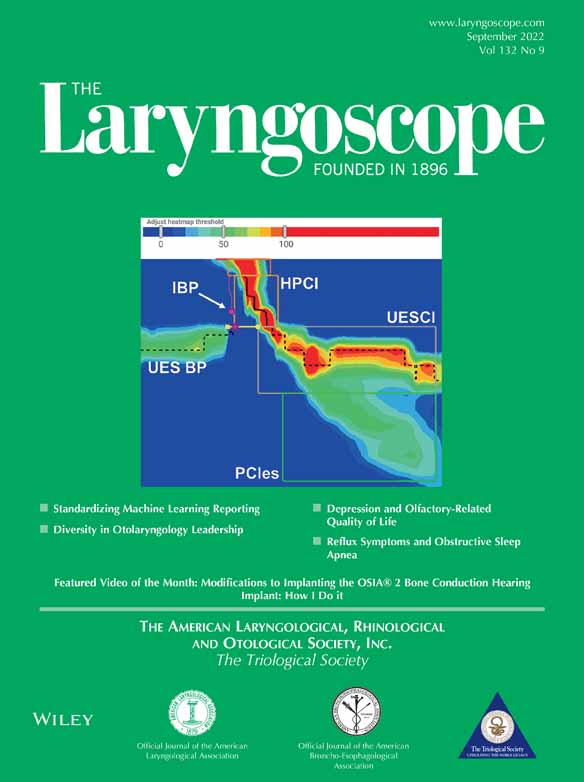Type-1 Laryngeal Cleft and Pathogenic Bacterial Growth in the Lower Airway in Children
Editor's Note: This Manuscript was accepted for publication on January 3 2022.
This study was presented at the American Thoracic Society Conference in Dallas, Texas, U.S.A., May 19, 2019.
The authors have no funding, financial relationships, or conflicts of interest to disclose.
Abstract
Objectives/Hypothesis
The purpose of this study is to evaluate the association between type-1 laryngeal clefts and pathogenic bacterial growth in the lower airway in children.
Study Design
Retrospective chart review.
Methods
A retrospective chart review was conducted for all children who underwent direct laryngoscopy, flexible bronchoscopy with bronchoalveolar lavage (BAL), and esophagogastroduodenoscopy, under a single anesthetic event from 2015 until 2018 at an academic tertiary referral center. Type-1 laryngeal clefts were diagnosed as an interarytenoid depth at or below the level of the vocal folds, on direct laryngoscopy, via palpation by a fellowship-trained pediatric otolaryngologist. Pathogenic bacterial growth in the lower airway was defined as presence of BAL culture growth of nonrespiratory flora.
Results
A total of 217 patients were identified. Type-1 laryngeal cleft was significantly associated with chronic cough (P = .0016) and cough with feeds (P < .0001). However, an abnormal video fluoroscopic swallow study was not found to be significantly associated with type-1 laryngeal cleft (P = .92) or pathogenic bacterial growth in the lower airway (P = 0.19).
Overall, 122 (56%) patients were diagnosed with type-1 laryngeal cleft, 75 (35%) had pathogenic bacterial growth in the lower airway and 50 (23%) had both type-1 laryngeal cleft and pathogenic bacterial growth in the lower airway. Type-1 laryngeal cleft was significantly associated with pathogenic bacterial growth in the lower airway on both univariate analysis (P = .0307) and multivariate analysis (P = .0298, odds ratio 1.922, 95% confidence interval 1.066–3.467).
Conclusion
Children with type-1 laryngeal clefts are at higher risk of having pathogenic bacterial growth in the lower airway.
Level of Evidence
4 Laryngoscope, 132:1825–1828, 2022




